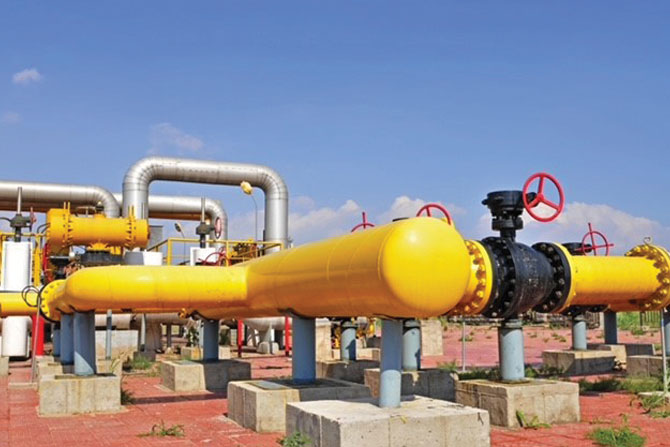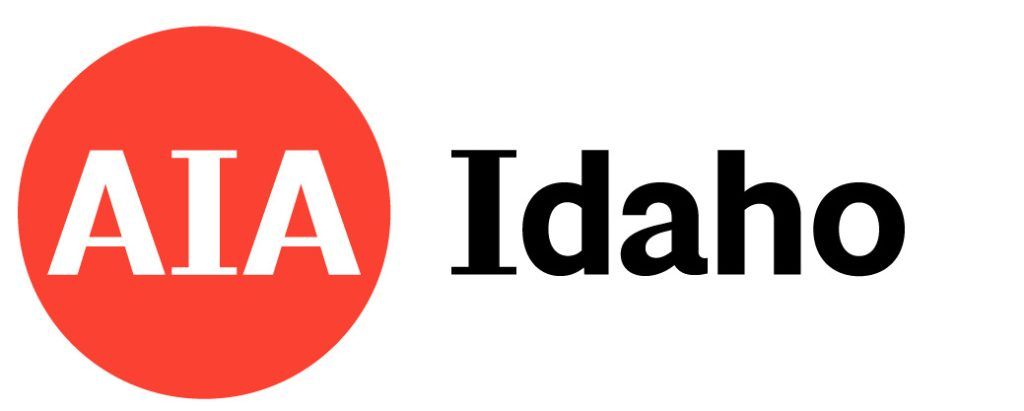Intermountain Gas is proud to join the American Institute of Architects (AIA) Idaho Chapter as a fuel distribution company with resources to support the AIA’s journey towards carbon neutrality by 2030. Our shared values with AIA start with a commitment to being a catalyst for change. That means holding ourselves to the highest standards as we explore what it means to be a gas delivery company at a time when GHG emissions reductions have never been more important.
The path to carbon neutrality runs through the pipelines of gas suppliers like Intermountain. We serve an essential role in decarbonization efforts.
In fact, pathways to reducing GHG emissions have been long pursued by our industry. Methane emissions rates associated with natural gas production have declined continuously since 1990 and today are just 1%1. Natural gas distribution systems likewise emit less than 0.1% of produced natural gas annually, decreasing emissions 73% between 1990 and 2017 even as our industry experienced a 50% increase in natural gas production.2
Recent analysis performed on behalf of Oregon’s Rural Gas Service by Guidehouse has indicated that a decarbonization pathway leveraging the use of gas pipelines and low carbon gaseous fuels alongside other decarbonization strategies, can result in cost-effective GHG reductions and deeper decarbonization, as well as increased energy reliability and resource adequacy.3 Research from the Gas Technology Institute (GTI) has likewise demonstrated that decarbonization pathways inclusive of natural gas can offer appreciable CO2e emissions reductions with lower costs to consumers and society.4 This places our industry at a strong starting point to support the decarbonization goals of our communities, while sustaining the energy system as more intermittent fuels, such as solar and wind energy, come on to
the grid.
However, in order to maintain a continued mix of fuels to heat and power today’s modern buildings, it’s essential that the fuels and technologies are paired together in ways that maximize the value they bring to end users. This can be achieved through a twofold strategy of reducing the carbon intensity of the fuels we depend on and increasing the efficiency of the equipment and buildings that use them. Intermountain sees such convergence of energy and building science as having invaluable benefit for the climate we all share. AIA members are part of an essential partnership that can maximize efficiencies both at the energy source, as well as at the site where it’s utilized.
Decarbonizing Fuels
There’s a revolution taking place in how energy is being sourced across the wires and pipelines that bring heat and energy to our homes and businesses. Just as the electric sector is increasing investments in wind turbines and solar panels to meet the needs of a low carbon future, so too is the gas sector investing in decarbonized innovations such as renewable natural gas and hydrogen.
Direct use gaseous fuels are the most efficient application of this energy source in homes and buildings and avoids line losses associated with the use of gas to generate electricity. The efficiency benefits of direct use can be further maximized through the strategic inclusion of low carbon fuels into the pipeline. Gas infrastructure, much like electric wires, are a highway through which multiple energy sources can be transported to end users. The pairing of renewable with traditional fuel sources within our gas pipeline is an essential step to reducing GHG emissions while simultaneously reducing the risk of brownouts associated with intermittent renewable resources.
While some technologies, such as hydrogen, are still emerging, a broad coalition of energy companies and efficiency organizations are working together to support this transformation. In January 2021, the Electric Power Research Institute and GTI partnered together on a five-year endeavor called the Low-Carbon Resources Initiative (LCRI)5. The initiative focuses on the large-scale deployment of low-carbon electric generation technologies and low carbon energy sources such as hydrogen, bioenergy, and renewable natural gas (RNG). These tools will help enable affordable pathways to economy-wide decarbonization. Intermountain is currently investing in a five-year commitment to this coalition and believes strongly in the value of transformative partnerships and investments to drive innovation.
As we move forward with increased investments in emerging technologies, Intermountain Gas is also proactively reducing the carbon intensity of the product we deliver today by introducing RNG into our system. As of April 2021, Intermountain pipelines transported more than 480k Dth of RNG from three dairy digesters to end-use customers, or enough to power 14k homes for a year. We look forward to adding more RNG into our system as it becomes available.
In addition to decarbonizing the fuels placed in the gas pipeline, local distribution companies are managing upstream and fugitive emissions through programs such as Call Before You Dig 811, Common Ground Alliance, and continual exploration of other voluntary actions to reduce methane emissions from excavation damage. Programs such as EPA’s Natural Gas Star Methane Challenge Program, of which Intermountain Gas is a founding member, also support comprehensive actions to reduce methane emissions.
Together, this suite of actions ensures that gaseous fuels, along with the thousands of miles of existing infrastructure that move it, remains available to customers to provide the Northwest with reliable energy for space and water heating, cooking, agriculture, manufacturing, and many other essential end-uses. But even the least carbon-intensive energy is only as reliable as the equipment used to harness it, and the efficiency of the building that relies on such fuels.
Decarbonizing Buildings
AIA members are no strangers to innovation in the design of high-performance architecture. As the newest member of AIA, Intermountain looks forward to leveraging our partnerships with GTI and other leaders in energy innovation in support of greater adaptation of the building and energy sectors to meet modern challenges. We have already begun this work as recognized leaders driving energy efficient residential construction across our service area, receiving the 2021 ENERGY STAR ® Market Leader Award for efforts that resulted in an additional 1,536 homes and/or apartments being certified as ENERGY STAR ® in 2020.
Advances in building design inclusive of gaseous space and water heating equipment can help further drive our industries towards the achievement of high energy performance and carbon neutrality.
Research from GTI demonstrates that gas heat pump technology can result in significant reductions to energy consumption with efficiencies greater than 100%.6 The Utilization Technology Development (UTD) group of GTI is in the process of further developing and demonstrating this technology as well as next generation combined heat and power systems leveraging the resiliency, reliability, and economy of gaseous fuels. Intermountain looks forwarding to continuing to partner on these efforts as well as with the North American Gas Heat Pump Collaborative, which seeks to transform the market to state-of-the-art natural gas heat pump technologies. Such opportunities can be leveraged to benefit the AIA membership as we strive towards deeper efficiency and NZE buildings.
This strategic partnership of building professionals, equipment manufacturers, and fuels suppliers is essential to ensuring balanced and effective pathway towards decarbonization. Intermountain is proud to join the AIA in its efforts to elevate the way energy is used in buildings. The path ahead is complex, but we are confident that together, we can help realize the vision of AIA’s 2030 commitment. We are proud to take this journey with our fellow AIA members. b
Intermountain Gas Company is a natural gas distribution company serving approximately 391,000 residential, commercial, and industrial customers in 76 communities in southern Idaho.


Alyn Spector is Manager of Energy Efficiency Policy for Cascade Natural Gas Corporation, sister company to Intermountain Gas. He has been in the energy industry for over 15 years and developed energy efficiency programs and decarbonization strategies for his organization since 2008.
1 According to the U.S. Environmental Protection Agency (EPA) Inventory of U.S. Greenhouse Gas (GHG) Emissions and Sinks: 1990–2018 released in April 2020 as well as the EPA’s Greenhouse Gas Reporting Program (GHGRP).
2 Northwest Gas Association, 2021 Natural Gas Facts
https://www.nwga.org/wpcontent/uploads/2021/03/NWGA_Facts_2021_Final.pdf
3 Analysis of Oregon’s Cap-and-Reduce Program GHG Emissions Reductions, Provided to Avista Corporation and Cascade Natural Gas Corporation, October 22, 2021
4 Case Studies of Future Residential Natural Gas and Electrification Scenarios in Leading Low Carbon Regions https://Future-Residential-Natural-Gas-and-Electrification-in-Low-Carbon-Regions-Technical-Paper_Liss-Jun2018.pdf (gti.energy)
5 Hydrogen Technology Center — Low-Carbon Resources Initiative • GTI
6 Bridging the gap: gas-fired absorption heat pumps in America — CIBSE Journal









